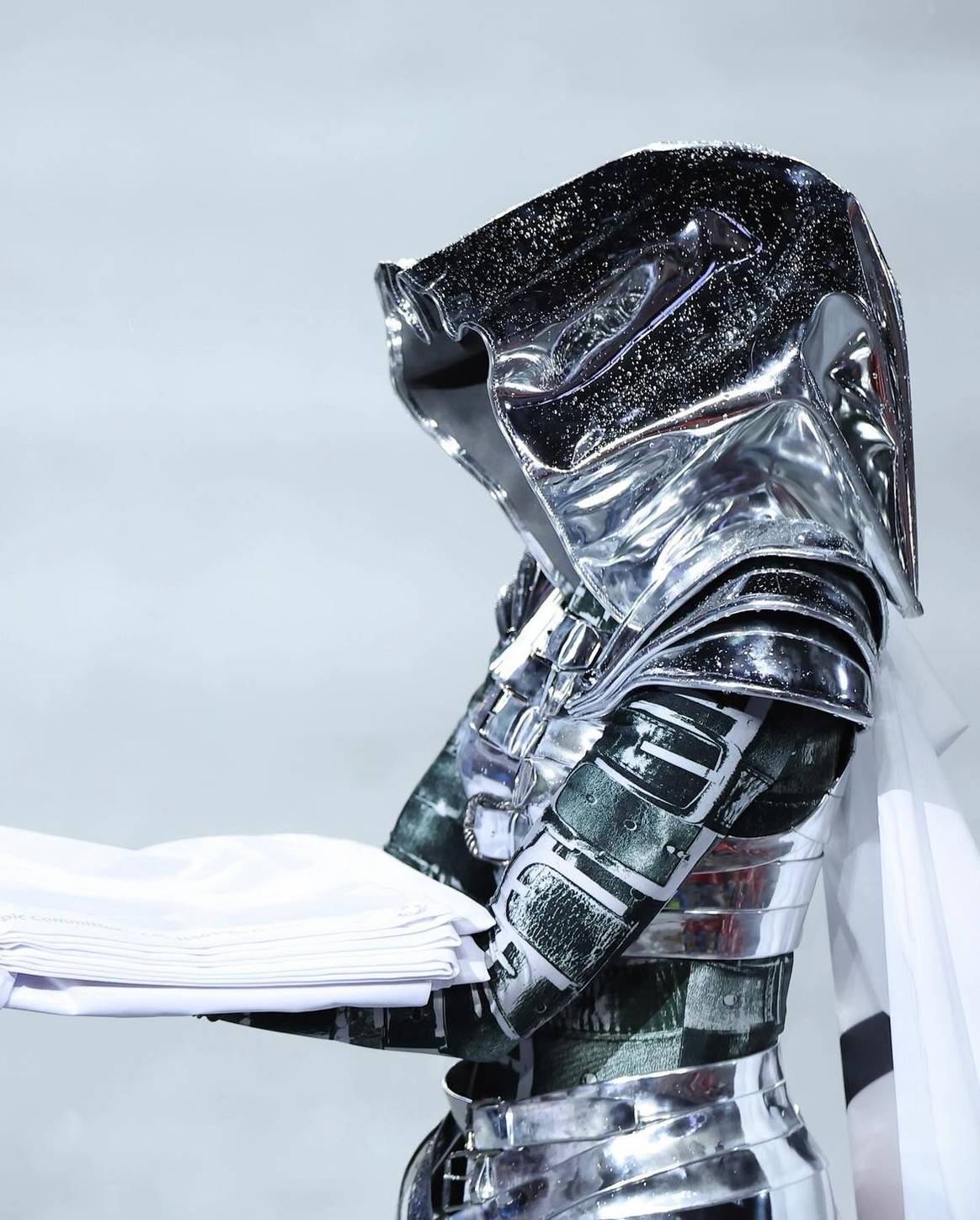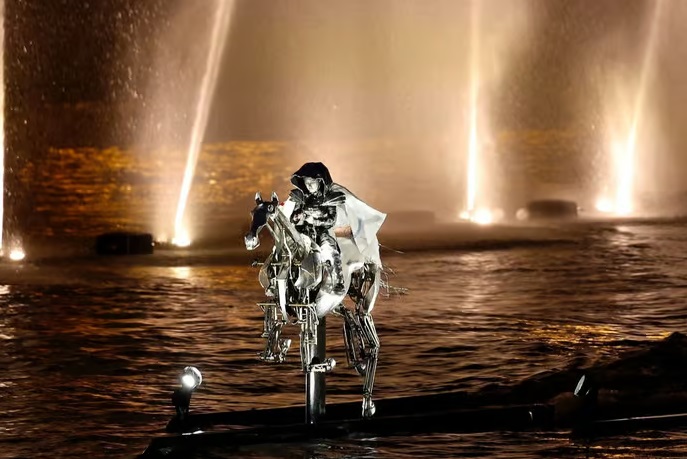Blog
‘Queer Fashion’ in Paris: French Designers Break Olympic Tradition
The opening ceremony of the Olympic Games in Paris showcased bold and innovative fashion, departing from tradition. The spotlight was not only on designs from the luxury conglomerate and official Olympic partner LVMH but also on emerging talents.
Artistic directors Thomas Jolly and Daphné Bürki made a statement with their costume and designer selections. Their efforts brought the unconventional creations of French designers Jeanne Friot, Charles de Vilmorin, Kevin Germanier, Alphonse Maitrepierre, Weinsanto, and Gilles Asquin to the forefront during the ceremony in the French capital. The enthusiasm for this queer-themed event, embodying values of inclusion, love, and freedom, was palpable both in the stands and at the bar Chez Mylène by the Seine in Bastille, where a “Drag Race Party” is regularly hosted.
“After the recent rise of the National Collective Movement, we needed an event like this,” French designer Jeanne Friot told FashionUnited. Known for her commitment to the LGBTQIA+ community and her role as its fashion spokesperson, Friot had to prepare the fashion spectacle in utmost secrecy for a year—a secret that became increasingly difficult to keep as the big day approached.
A year ago, Bürki and Jolly, who had both walked twice for Friot, were approached for this project. The creative duo envisioned a tableau featuring the horse and the symbolism of French resistance fighter Joan of Arc, choreographed by French dancer Maud le Pladec. The goal was to highlight young French artists. The Organizing Committee of the Olympic Games approved the concept.
The project seemed ambitious: not only because of the main sponsor LVMH, which dominated many areas and took on the task of dressing the performing stars—Lady Gaga, Aya Nakamura, and Céline Dion in Dior outfits—but also because of the distinctly queer-oriented fashion show on the Passerelle Debilly pedestrian bridge.

Design by Jeanne Friot.
Joan of Arc with the Olympic Flag at the Eiffel Tower
“Because of her name and story, this proposal around Joan of Arc was symbolically tied to my own,” Friot explains. “With my team, we created a belt-print jumpsuit—similar to the dress Bürki wore at my Fall/Winter 2024 show—and leather armor made of faux metal with French leather artist Robert Mercier.” On Instagram, Mercier expressed his gratitude: “I have no words to describe my feelings for being part of this incredible event. I am infinitely grateful. You have shown me that amazing projects can be created with honesty and kindness.”
Not knowing who would wear her designs, Friot had to duplicate them to fit all body shapes. In addition to what will likely be a landmark performance at the Olympic and Paralympic Games’ opening ceremonies, Friot showcased her work alongside other contemporary designers at the “Neuvième en scène” festival, highlighting artistic talent in Paris’ ninth arrondissement.
French Fashion for Fun and Inclusion
Prominent but not widely known French designers participated in the show: Kevin Germanier, noted for his affinity for drag queens; Victor Weinsanto, who presented a pink Alsatian headdress made of printed organza inspired by Kelsh fabrics—worn by model Ildjima aka Queen Toïdé; and Alphonse Maitre Pierre and Gilles Asquin, who has designed numerous looks for “Drag Race France.” The event featured music from DJ and LGBT icon Barbara Butch.
Floating Dancers on the Seine
The sequence featuring dancers on the Seine, appearing to float in the air on stilts, was created by French designer Charles de Vilmorin, known for his colorful prints.
Friot told FashionUnited that she “enjoyed total creative freedom,” allowing her to fully unleash her imagination. Crucially, the organizing committee accepted the fashion show’s transformation, enhancing Paris’ image as a fashion capital. Even Bürki found it hard to believe it “would pass.” But it did.
This article originally appeared on FashionUnited.FR, translated and edited into English.
 Skip to content
Skip to content

